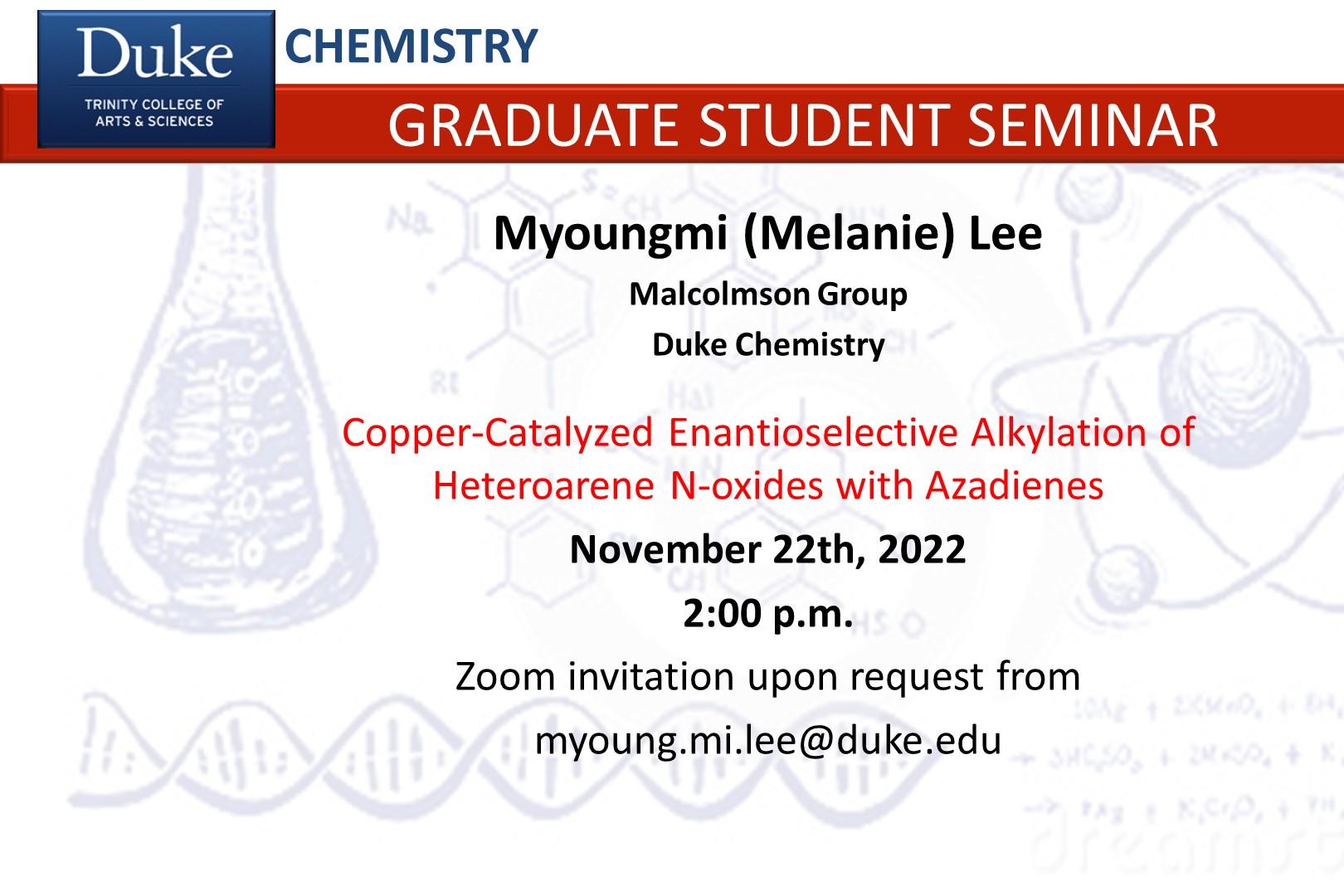
Myoungmi (Melanie) Lee, M.S. Candidate
Steve Malcolmson, Ph.D., Advisor
Abstract: Heteroarenes bearing nitrogen centers as pyridines and quinolines are ubiquitous in pharmaceuticals, agrochemicals, and small molecules of medicinal interest. Among them, quinoline derivatives belong to a significant class of bioactive molecules in the field of drugs and pharmaceuticals and they also display significant activity against numerous viruses and bacterium. Previous studies on enantioselective synthesis of α-heterocyclic amine derivatives include diastereoselective addition of organometallics to enantiopure pyridyl imines derived from Ellman auxiliary, enantioselective reduction of a pyridyl ketone, conversion to a leaving group, and azide displacement. In addition, numerous other methods have been developed to prepare alkylated N-heteroarenes. However, protocols for enantioselective synthesis are rather limited and these stereospecific transformations require stoichiometric amounts of optically pure reagents and do not create new stereogenic centers. Considering the aforementioned limitations, it was investigated that a chiral Cu‒alkyl species, generated by insertion of alkenes into a chiral Cu‒H complex, could react with quinoline N-oxides to produce chiral 2-alkylated quinolines by the Ge group. The strategy that utilizes quinoline N-oxide as an electrophile led us to aim to expand the methodology to afford enantioenriched α-alkylated chiral quinolines from quinoline N-oxide and 2-azadienes via a copper-catalyzed process with various types of chiral ligands. However, there are possible challenges to this reaction including a reductive dimerization of 2-azadiene, reduction of quinoline N-oxides to quinolines, and potential catalyst deactivation. If these challenges can be overcome, this strategy could represent a practical protocol to prepare chiral alkylated quinolines from readily available quinoline N-oxides and alkenes.